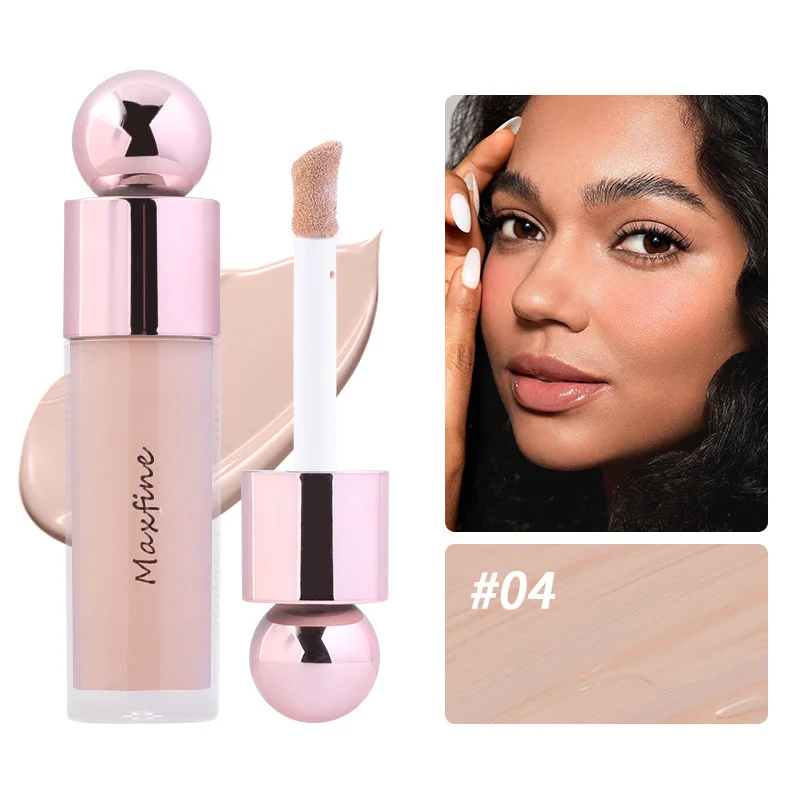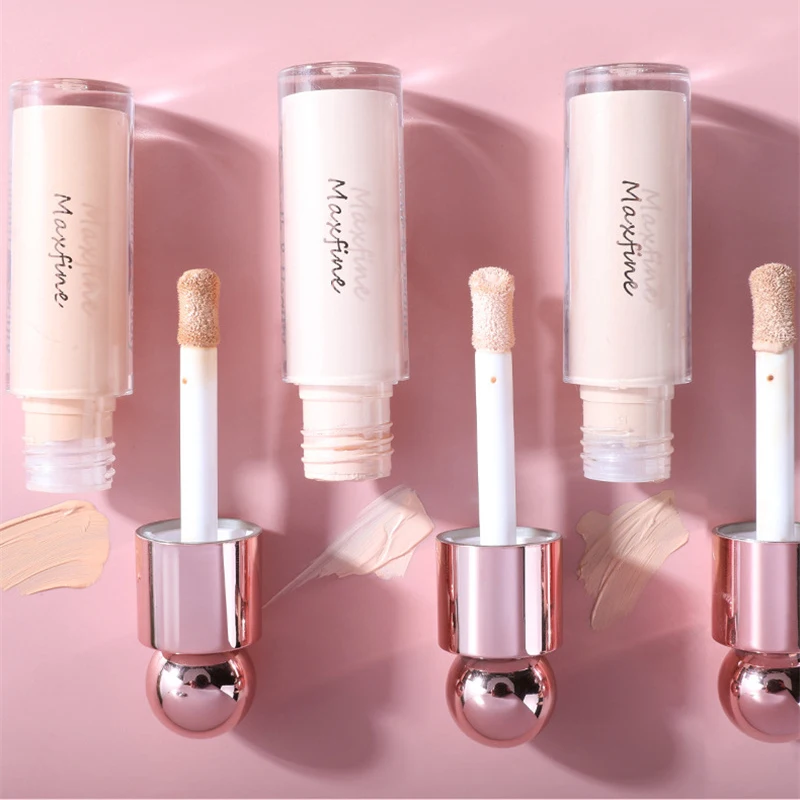Introdcution
Makeup can be a fun and transformative experience, allowing people to enhance their natural beauty. Two of the most essential products in any makeup kit are concealer and foundation. While they may seem similar, they serve distinct purposes and have different formulations. Understanding the difference between concealer and foundation can help you achieve a flawless look. This guide will explore the purposes, formulations, and application techniques for concealer and foundation.

What is Foundation?
The Role of Foundation
Foundation is a cosmetic product that provides an even base for the rest of your makeup. It covers imperfections, evens out skin tone, and helps create a smooth canvas. People use foundation to address various skin concerns. Whether you want to cover redness, dark spots, or uneven texture, foundation can help.
Foundation comes in various forms, including liquid, cream, powder, and stick. Each type has its own benefits and can cater to different skin types. For example, liquid foundations offer a lightweight feel and a natural finish, making them popular for everyday wear. Cream foundations provide more coverage and are ideal for special occasions. Powder foundations are great for those with oily skin, as they help control shine.
Choosing the Right Foundation
When selecting foundation, consider your skin type and the finish you desire. If you have oily skin, look for oil-free formulas or mattifying foundations. If you have dry skin, opt for hydrating or dewy foundations. Understanding your skin type is crucial for choosing the right product.
It’s also important to find the right shade. The best way to match your foundation is to test it on your jawline. This area allows you to see how the color blends with both your face and neck. Natural light is the best for testing. Always swatch a few shades to find your perfect match.
How to Apply Foundation
Applying foundation is an essential skill in makeup application. Start with clean, moisturized skin. A good moisturizer helps create a smooth base. After moisturizing, apply a primer to help your foundation adhere better and last longer.
You can use various tools to apply foundation, including brushes, sponges, or your fingers. Each tool offers different results. For a natural look, use a damp makeup sponge. This method helps blend the foundation seamlessly into your skin. For more coverage, a foundation brush can provide a polished finish.
Start applying foundation from the center of your face and blend outward. This technique helps avoid excess product on the outer edges. Focus on areas that need more coverage, such as the cheeks and around the nose. Use a light hand to avoid a cakey appearance. Build coverage gradually for the best results.
What is Concealer?
The Purpose of Concealer
Concealer is a thicker makeup product used to cover specific imperfections on the skin. It is ideal for hiding dark circles, blemishes, redness, and other spots that foundation might not cover adequately. While foundation provides an even base, concealer targets specific areas that need extra attention.
Like foundation, concealer comes in various forms, including liquid, cream, and stick. Each type has its benefits. Liquid concealers are great for under-eye coverage, while cream concealers offer more coverage for blemishes. Stick concealers are portable and easy to use, making them perfect for on-the-go touch-ups.

Selecting the Right Concealer
Choosing the right concealer is crucial for achieving a flawless finish. When selecting concealer, consider the areas you want to cover. For dark circles, choose a shade that is one or two shades lighter than your foundation. This will help brighten the area and give a more awake appearance.
For blemishes and redness, choose a concealer that matches your foundation. This helps the concealer blend seamlessly into your skin. Testing concealers on your jawline can help you find the right shade.
It’s also important to consider the formula. If you have dry skin, opt for hydrating concealers that won’t emphasize dryness. For oily skin, look for mattifying formulas that won’t slide off throughout the day.
How to Apply Concealer
Applying concealer correctly can make a significant difference in your overall makeup look. Start by applying your foundation first. This will help you see where additional coverage is needed. After applying foundation, assess your face for any areas that require extra attention.
When applying concealer, use a small brush or your fingertip. For under-eye circles, apply the concealer in a triangular shape. This technique not only covers dark circles but also lifts the face. For blemishes, use a small brush to apply the concealer directly onto the spot. Blend the edges to ensure a seamless look.
Be careful not to use too much product. A little goes a long way with concealer. Over-applying can lead to a cakey appearance. Start with a small amount and build coverage as needed. This technique ensures a natural finish.
Key Differences Between Concealer and Foundation
Coverage Levels
One of the most significant differences between concealer and foundation is the level of coverage each provides. Foundation is designed to offer a light to medium coverage across the entire face. It aims to create a uniform appearance by evening out the skin tone.
In contrast, concealer is thicker and provides more coverage for specific areas. Its primary purpose is to conceal imperfections that foundation cannot fully cover. This targeted application makes concealer essential for achieving a flawless look.
Texture and Formulation
Another critical difference lies in the texture and formulation of the products. Foundation is typically more liquid or creamy, allowing it to blend easily over larger areas of the face. It often contains skin-benefiting ingredients that hydrate or mattify the skin, depending on the formula.
On the other hand, concealer has a thicker consistency. This texture allows it to adhere to the skin better and provide coverage for stubborn spots. Concealers may contain more pigments than foundation, enabling them to mask discoloration effectively.
Application Techniques
The application techniques for foundation and concealer also differ. Foundation is generally applied first, creating a base for the rest of your makeup. It can be applied using various tools, such as brushes, sponges, or fingers, and is often blended over the entire face.
In contrast, concealer is typically applied after foundation. This method allows you to see where extra coverage is needed without disturbing the foundation underneath. Applying concealer requires a more targeted approach, often using a small brush or your fingertip to apply it precisely to the areas that need it.
How to Use Foundation and Concealer Together
Layering Techniques
Using foundation and concealer together can create a flawless finish. Start by applying your foundation evenly across your face. Use a foundation brush or sponge to ensure smooth application. Once your foundation is in place, allow it to settle for a few moments.
After applying foundation, assess your face for areas that need more coverage. This is where concealer comes in. Use a small brush or your fingertip to apply concealer to specific spots. For dark circles, apply the concealer in a triangle shape under your eyes. This technique brightens the area and creates a lifting effect.
For blemishes, use a small brush to dab concealer directly onto the spot. Blend the edges with your fingertip to ensure it seamlessly merges with your foundation. Avoid applying too much product to prevent a cakey appearance. Start with a small amount and build coverage as needed.
Setting Your Makeup
After applying both foundation and concealer, it’s essential to set your makeup. Setting powder or spray helps lock everything in place and controls shine throughout the day. Using a fluffy brush, apply a light layer of translucent powder to areas that tend to get oily.
For under-eye areas, consider using a finely milled powder to avoid creasing. This technique will help your concealer stay in place without adding extra weight. After applying powder, use a setting spray to finish off your look. Hold the spray about six inches away from your face and mist lightly for a fresh finish.

Common Mistakes to Avoid
Over-Applying Products
One of the most common mistakes in using foundation and concealer is over-applying products. Many people think that more product equals better coverage. However, this often leads to a cakey or heavy appearance. Instead of layering on too much product, focus on blending and using the right amount.
For foundation, start with a small amount and build up as needed. Use a light hand when applying concealer, especially under the eyes. A little goes a long way, and you can always add more if necessary.
Neglecting Skin Prep
Another mistake is neglecting skin prep before applying makeup. A good skincare routine is essential for achieving a flawless look. Always start with clean, moisturized skin. Consider using a primer to help your makeup last longer and apply more smoothly.
Skipping these steps can result in uneven application and makeup that doesn’t last. Properly preparing your skin creates a smooth canvas for foundation and concealer, allowing for better blending and finish.
Conclusion
In summary, concealer and foundation are two essential products that serve different purposes in makeup application. Foundation provides an even base, while concealer targets specific imperfections. Understanding the differences between these products can help you achieve a flawless look.
When choosing and applying foundation and concealer, consider your skin type and the areas you want to cover. Use proper techniques for application and always prep your skin for the best results. With practice, you can master the art of using both foundation and concealer to enhance your natural beauty.
